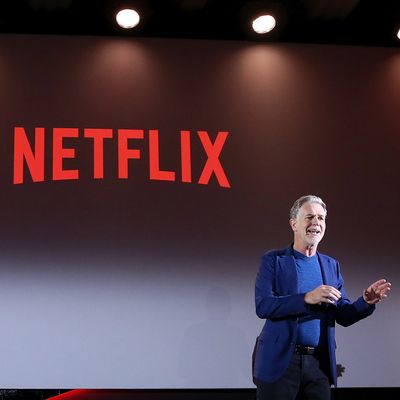
Netflix announced its fourth-quarter 2019 earnings on Tuesday after the market close. The company beat Wall Street estimates for both earnings growth and subscriber growth. Naturally, the stock fell 3.6 percent on Wednesday.
Why are investors nervous about Netflix despite its apparently good headline performance? There are two broad concerns.
One is that, while the company beat subscriber-growth estimates on the basis of strong growth internationally, it significantly lagged expectations in the U.S., adding just 420,000 American subscribers versus the 600,000 that were expected. In the U.S., Netflix faces intense competition from Disney’s streaming services, including Hulu and Disney+. Some key Netflix properties, like The Office and Friends, are being taken back by the studios that made them to stream on their own services; consequently, some Netflix customers may migrate to the new services that now carry their favorite shows. That competition is set to intensify when NBC and WarnerMedia launch their Peacock and HBO Max streaming services, respectively, later this year. And as these competing services launch abroad, Netflix’s growth problems in the U.S. may move abroad, too.
The other problem at Netflix has to do with cash. Unlike some other “hot” companies, Netflix reports positive net income. But it is strongly cash-flow negative. That combination is possible because of the way Netflix accounts for the production and acquisition of its content: When Netflix produces a new show, it’s treated on its financial statements as an investment, not an expense. Cash goes out the door when the show is made, but those cash payments are recognized as business expenses only gradually — they are amortized, in accounting terms — generally over a 10-year lifespan.
In fairness to Netflix, that amortization is accelerated: The bulk of the expense is recognized in the earliest years of a show’s or film’s airing, under the sensible assumption that newly available content does more to interest customers and generate subscriptions than old content does. But there are still two concerns for investors. One is that Netflix’s main balance-sheet asset represents the future subscription-generating value of content it has already made or bought, which is a more speculative proposition than, say, the value of an office building. (Netflix says its content library is worth nearly $10 billion more today than it was a year ago, and it has taken on more than $4 billion in additional long-term debt over that period.) The other concern is that, as Netflix loses key licensed content, it has to shove more and more cash out the door to produce its own content, at significant expense.
For consumers, the key question remains one I wrote about last summer: Is Netflix necessary? Surprisingly, this question is closely related to the accounting question of how Netflix should value and amortize its content assets.
The style of assets that Netflix owns is not unique. All entertainment companies invest speculatively in content on the expectation that it will produce future revenue. But other business models make it easier to figure out which parts of your entertainment business are making you money. If you release theatrical films, you know how much revenue each film, specifically, generates from ticket sales. If you own a broadcast-television network, you know how much each show generates in advertising sales. In Netflix’s case, subscribers pay one price for the whole bundle of content. Netflix knows what content gets watched the most, but it doesn’t know exactly which is generating and retaining subscribers — whether you were just watching reruns of The Office to fill time, for example, or whether The Office was the primary reason you paid for Netflix, such that its disappearance will cause you to cancel your membership.
While Netflix shows a profit on its income statement, it is unknown to us and not even fully known to Netflix itself which parts of its content library are profitable. And as Netflix faces an involuntary change in its business model toward a heavier reliance on original content, it should soon be revealed whether the company has been making money as a film and TV producer or whether money-losing original productions have been cross-subsidized by a lucrative but fading licensed-content business. We’ll likely have a clearer picture in a year or two.





























